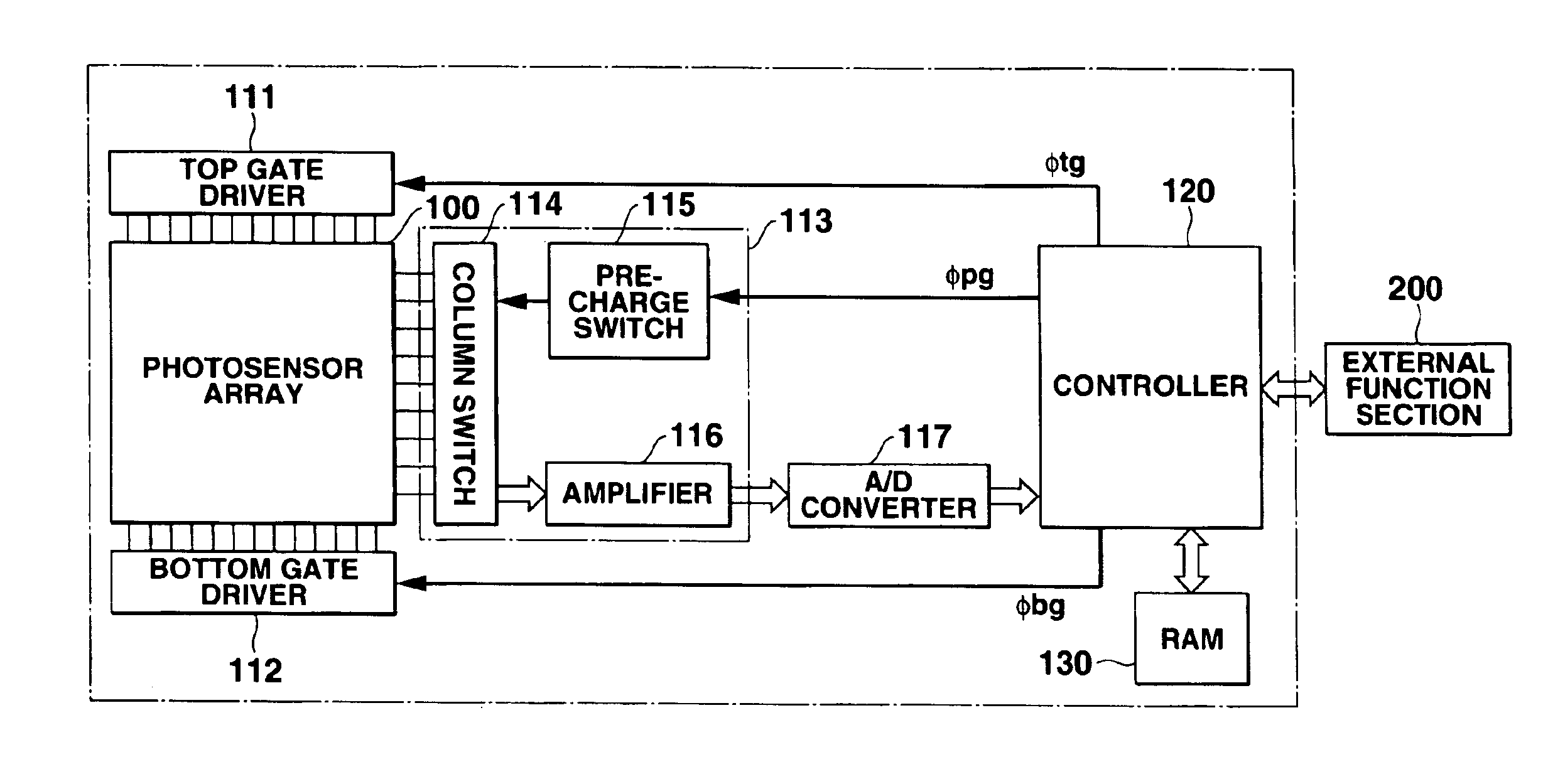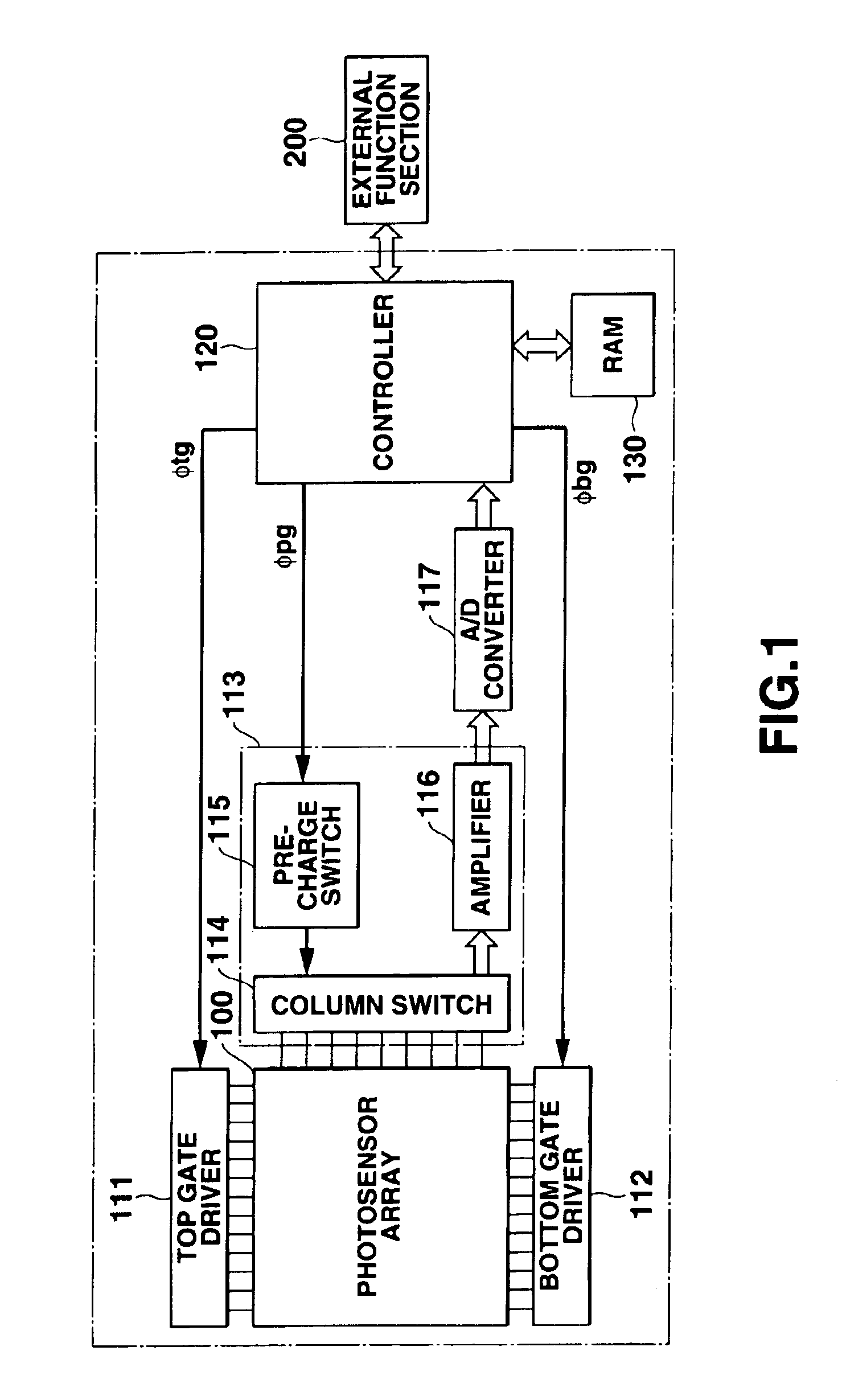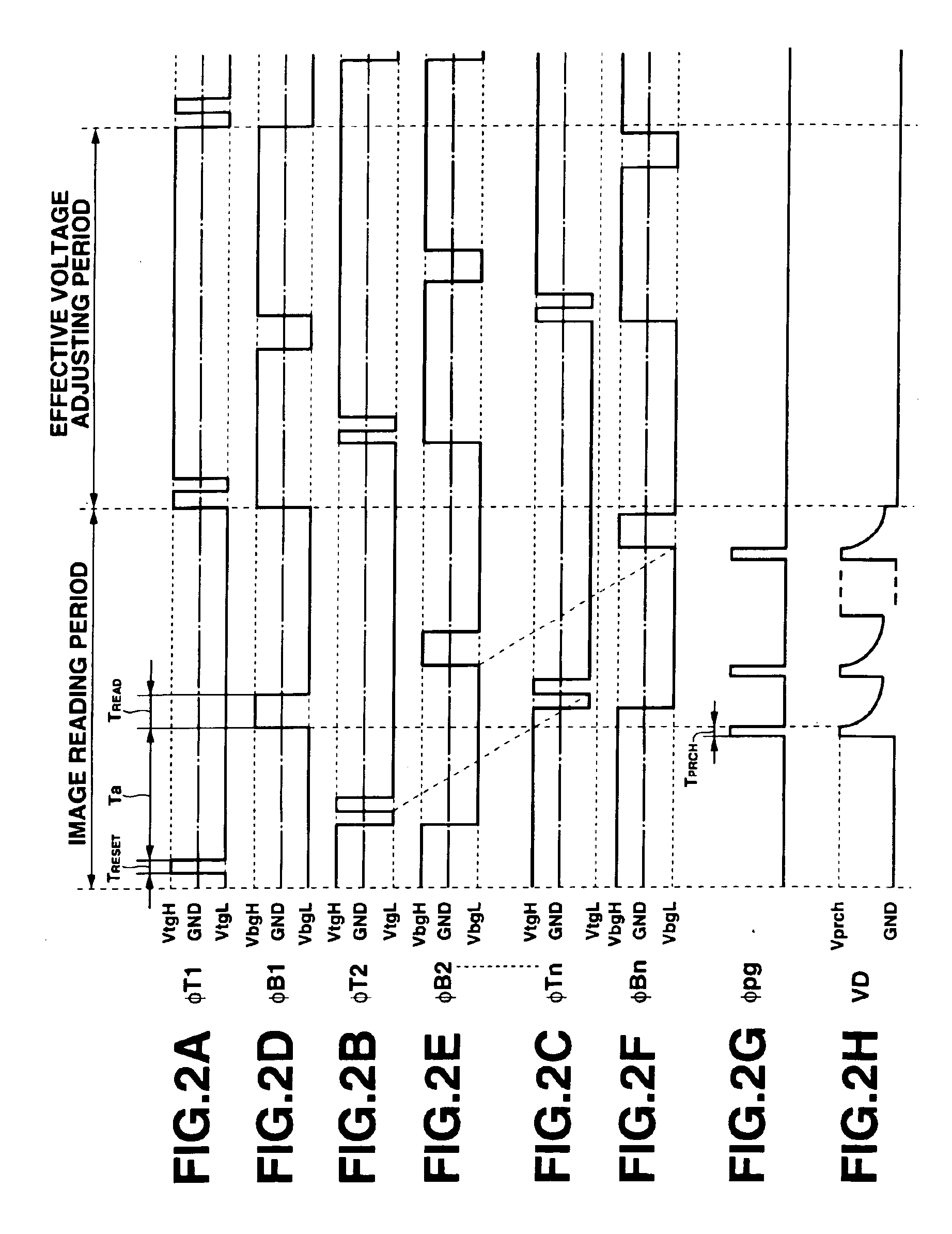Photosensor system and drive control method thereof
a technology of drive control and photosensor, which is applied in the field of photosensor systems, can solve the problems of reducing the reliability of the photosensor, affecting the reliability of the image reading apparatus, and inevitably changing the effective voltage applied to each gate terminal, and achieving the effect of high reliability and change in the sensitivity characteristi
- Summary
- Abstract
- Description
- Claims
- Application Information
AI Technical Summary
Benefits of technology
Problems solved by technology
Method used
Image
Examples
second embodiment
[0069]A method for controlling a photosensitive system according to the invention will be described with reference to FIGS. 4A-5B.
first embodiment
[0070]This embodiment differs from the first embodiment in that, in the former, the reset pulse signal and the readout pulse signal used in the image reading period each have a high level voltage and a low level voltage which are asymmetrical with respect to the GND level (0 V).
[0071]FIGS. 4A-4H are timing charts illustrating operation timing at each row employed in the photosensor system control method of the second embodiment of the invention. FIGS. 5A and 5B are timing charts illustrating in detail the waveforms of the voltage signals applied to the top and bottom gate terminals TG and BG of each double-gate photosensor 10 in this embodiment. The same control as employed in the above-described first embodiment will not be described in detail.
[0072]In the control method of this embodiment, at first, reset pulse signals φT1, φT2, . . . φTn shown in FIGS. 4A-4C are sequentially applied to the top gate lines 101, thereby sequentially starting reset periods Treset for respective rows,...
third embodiment
[0078]A method for controlling a photosensitive system according to the invention will be described with reference to FIGS. 6A-7B.
[0079]This embodiment is directed to a case similar to the second embodiment, where the reset pulse signal and the readout pulse signal used in the image reading period each have a high level voltage and a low level voltage which are asymmetrical with respect to the GND level (0 V).
[0080]FIGS. 6A-6H are timing charts illustrating operation timing at each row employed in the photosensor system control method of the third embodiment of the invention. FIGS. 7A and 7B are timing charts illustrating in detail the waveforms of the voltage signals applied to the top and bottom gate terminals TG and BG of each double-gate photosensor 10 in this embodiment. The same control as employed in the above-described embodiments will not be described in detail.
[0081]In the control method of this embodiment, at first, reset pulse signals φT1, φT2, . . . φTn shown in FIGS. 6...
PUM
 Login to View More
Login to View More Abstract
Description
Claims
Application Information
 Login to View More
Login to View More - R&D
- Intellectual Property
- Life Sciences
- Materials
- Tech Scout
- Unparalleled Data Quality
- Higher Quality Content
- 60% Fewer Hallucinations
Browse by: Latest US Patents, China's latest patents, Technical Efficacy Thesaurus, Application Domain, Technology Topic, Popular Technical Reports.
© 2025 PatSnap. All rights reserved.Legal|Privacy policy|Modern Slavery Act Transparency Statement|Sitemap|About US| Contact US: help@patsnap.com



